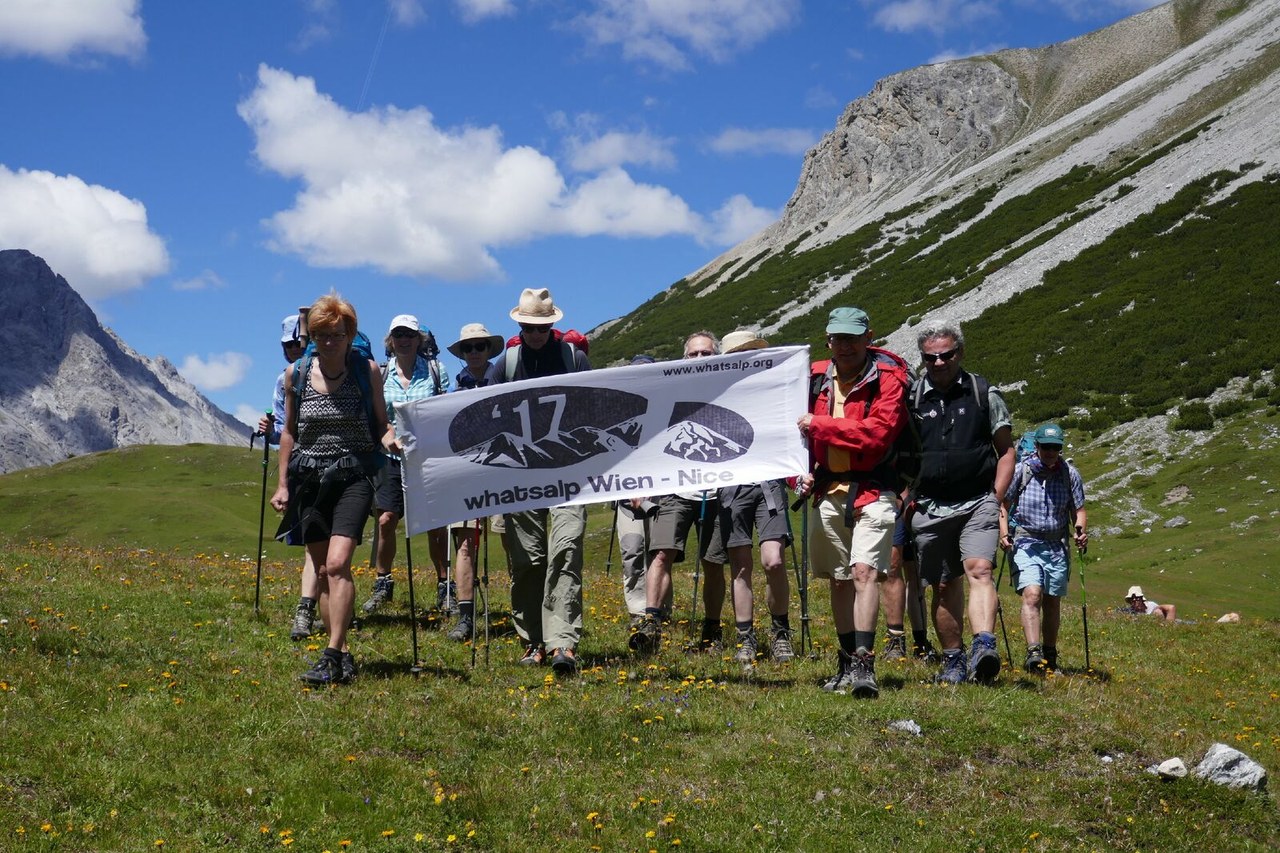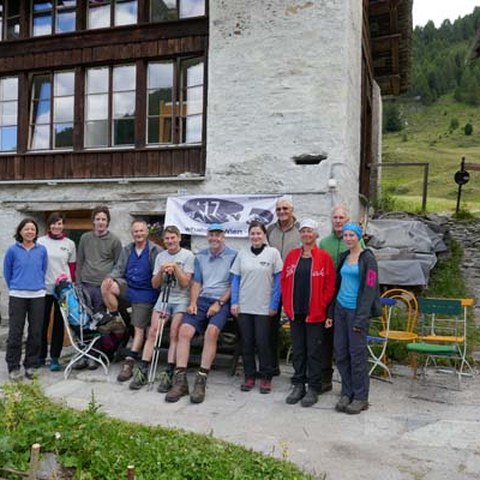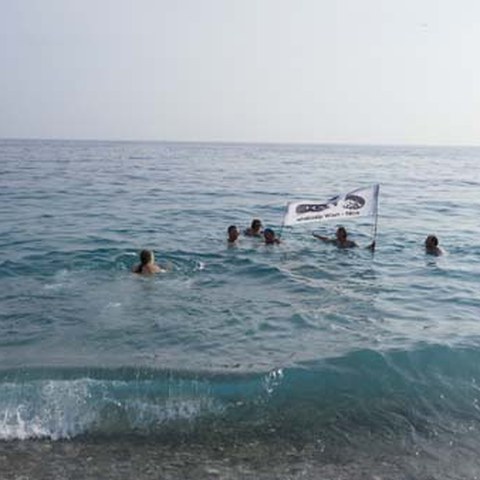whatsalp
Another objective was to draw a comparison with the results of the "TransALPedes”crossing of the Alps in 1992 and to take a look into the future. The main partners of the project were the International Commission for the Protection of the Alps (CIPRA) and the Swiss Alpine Initiative, in addition to numerous other partners such as the Alpine Convention, for instance. On the 29th of September 2017, the whatsalp group arrived in Nice and reported on the results.
On the journey of 1,800 kilometres around 200 co-hikers accompanied the core group of whatsalp in stages. The core team consisted of the Swiss geographers Dominik Siegrist and Harry Spiess as well as the Austrian Alpine experts Christian Baumgartner and Gerhard Stürzlinger.
The European Alps presented themself to the whatsalp team as a diverse and exciting region. They are, on the one hand, characterized by strong population growth, and on the other hand they are increasingly affected by a large-scale emigration in many regions. During the meetings and discussions with local people, the whatsalp team received the impression that today the young generation is significantly less represented in the mountain regions compared to 1992. “To change this, we need new strategies and models adapted to the respective national and regional circumstances,” says Harry Spiess of the whatsalp core team. It would be necessary to slow down the strong growth of the Alpine cities and to make the Alpine regions more attractive for living and working again, particularly for young people. Thirty of them accompanied the hiking group in sequences as part of the CIPRA project whatsalp youth
| Type | Title |
|---|---|

|
Whatsalp Results |















